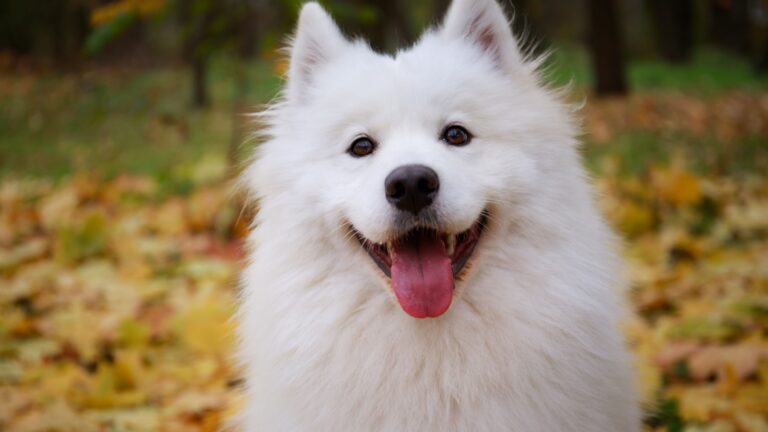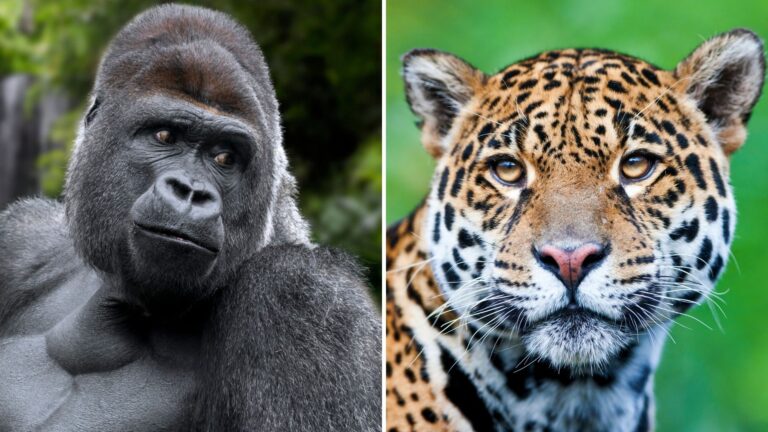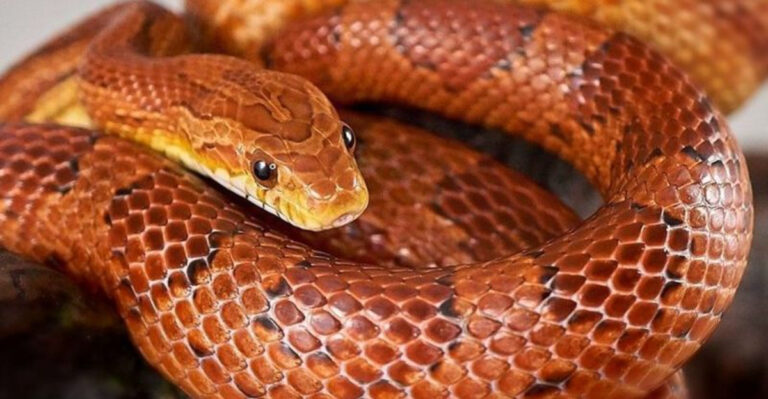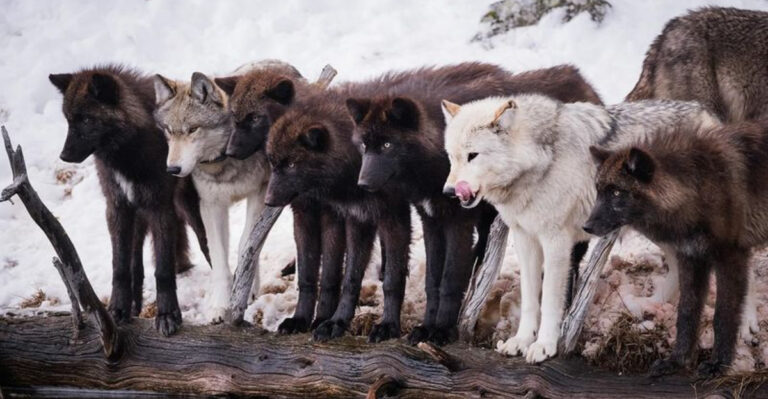15 Things You Didn’t Know About Large Parrots
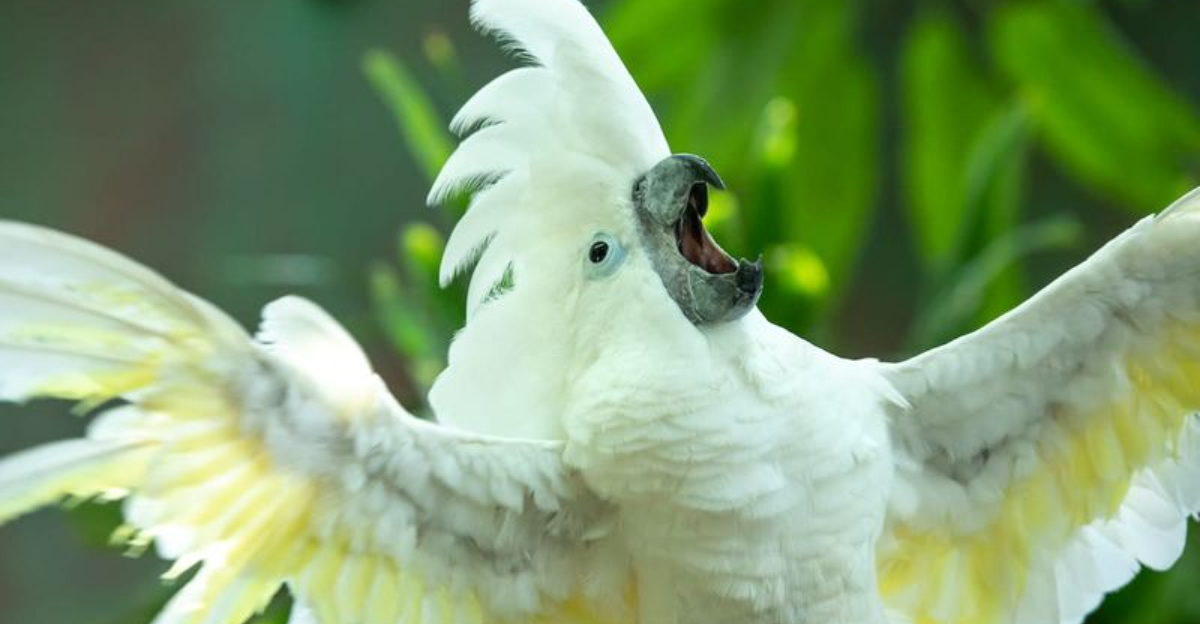
Ever wondered what secrets those magnificent feathered giants at the pet store might be keeping? Large parrots are among the most intelligent and longest-living companion animals humans can have, yet most people know surprisingly little about them.
From their remarkable cognitive abilities to their complex emotional lives, these colorful characters have fascinating traits that go way beyond their talent for mimicking human speech.
1. Parrot Lifespan Rivals Humans

Some large parrots outlive their owners! Macaws and cockatoos can live 60-80 years in captivity, with some documented cases exceeding 100 years.
This remarkable longevity means adopting a large parrot is truly a lifetime commitment. Many birds end up needing multiple homes throughout their lives when owners can’t maintain the decades-long responsibility.
2. They’re As Smart As Preschoolers
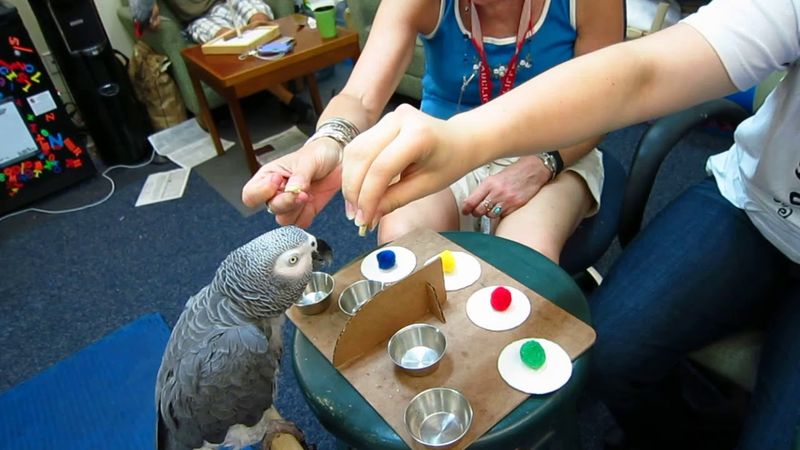
African Greys possess the intelligence equivalent to a 5-year-old child. They can understand concepts like zero, identify colors, and learn hundreds of words with their proper meanings.
One famous parrot named Alex knew over 100 English words and could identify objects by shape, color, and material. Scientists were shocked when he asked what color he was, showing self-awareness rarely seen in animals.
3. Emotional Creatures Who Need Companionship

Large parrots form deep emotional bonds and can actually die from loneliness or heartbreak. When kept alone without enough interaction, they develop depression and self-destructive behaviors like feather plucking.
In the wild, most species mate for life and live in large flocks. Their social needs don’t disappear in captivity – many owners report their birds showing jealousy, grief, and even comforting humans when they’re sad.
4. Beaks That Regrow Like Fingernails
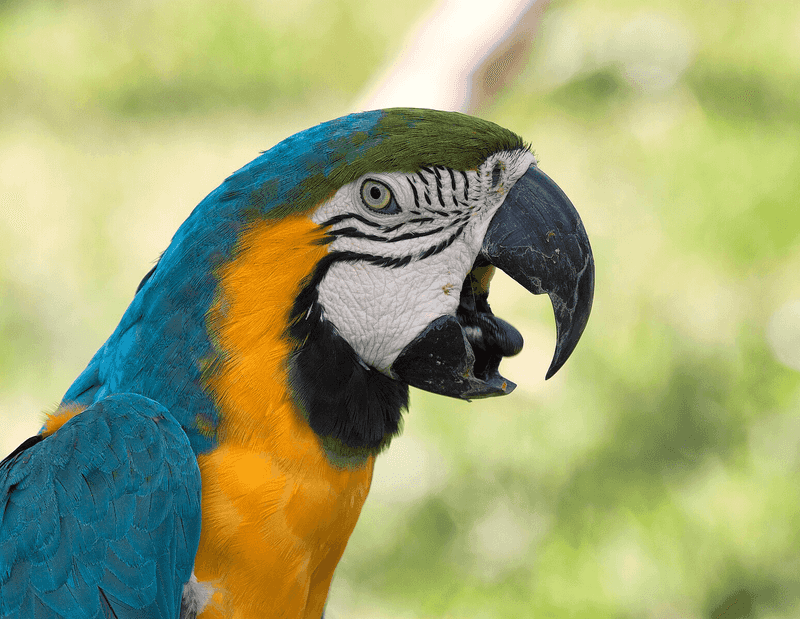
Unlike human teeth, parrot beaks continuously grow throughout their lives. The keratin-based structure wears down naturally as they chew, climb, and manipulate objects.
Without proper toys and chewing materials, their beaks can become overgrown and deformed. Wild parrots maintain perfect beak health by foraging, cracking nuts, and stripping bark from trees – activities captive birds need substitutes for.
5. Masters Of Vocal Mimicry Beyond Words
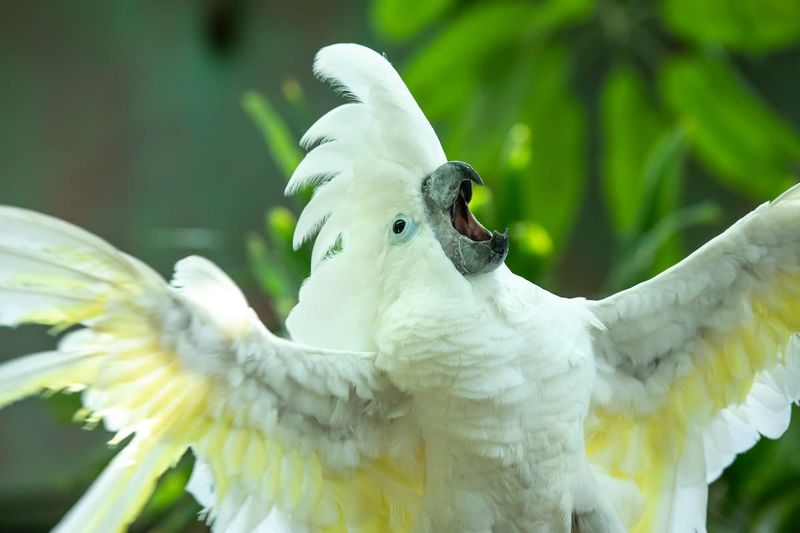
Beyond mimicking speech, large parrots can replicate almost any sound they hear with uncanny accuracy. From microwave beeps to cellphone ringtones, they’re audio chameleons.
One cockatoo became famous for perfectly imitating the sound of a construction site near his home, complete with jackhammers and backup beepers. Another amazed his owners by recreating their entire morning routine sounds, from coffee grinder to shower running.
6. They See Colors We Can’t Imagine

Parrots have tetrachromatic vision, meaning they see four primary colors instead of our three. This includes ultraviolet light invisible to humans.
Their feathers have patterns only visible in UV light, creating a secret visual language. What looks like plain white to us might be brilliantly patterned to other parrots. This enhanced vision helps them identify ripe fruits and potential mates in the wild.
7. Flying Powerhouses Need Space
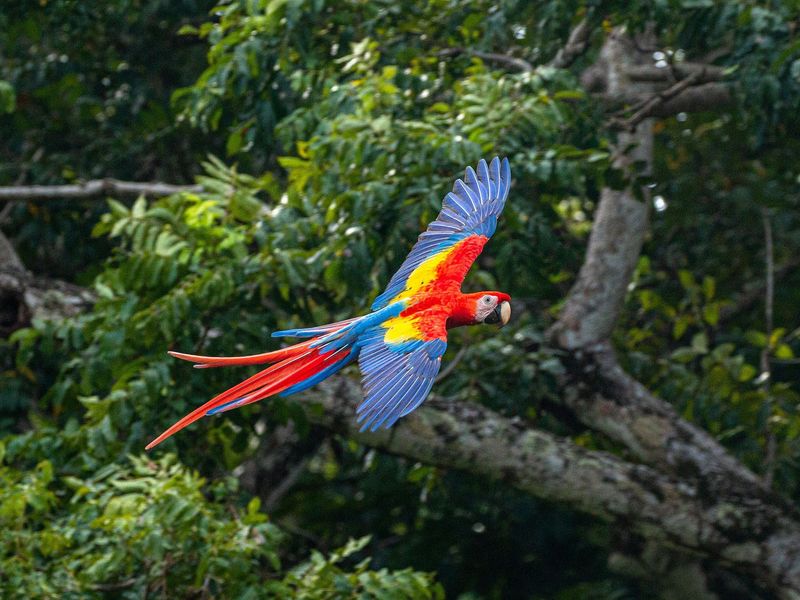
Wild macaws can fly over 500 miles in a single day searching for food. Their powerful wing muscles need regular exercise to stay healthy.
Captive parrots denied flight often develop heart problems, obesity, and behavioral issues. Even with clipped wings, large parrots need spaces to climb, flap, and move freely. Their bodies evolved for constant movement through rainforest canopies.
8. Diet More Complex Than Just Seeds

Forget the simple seed mix! Large parrots require incredibly varied diets that change with seasons. In the wild, they eat hundreds of different foods throughout the year.
Many captive parrots develop serious health problems from limited diets. They need fresh vegetables, fruits, nuts, flowers, and even some insects or clay for proper nutrition. Some species have specialized beaks for cracking specific regional nuts found only in their native habitats.
9. Nature’s Ecological Engineers
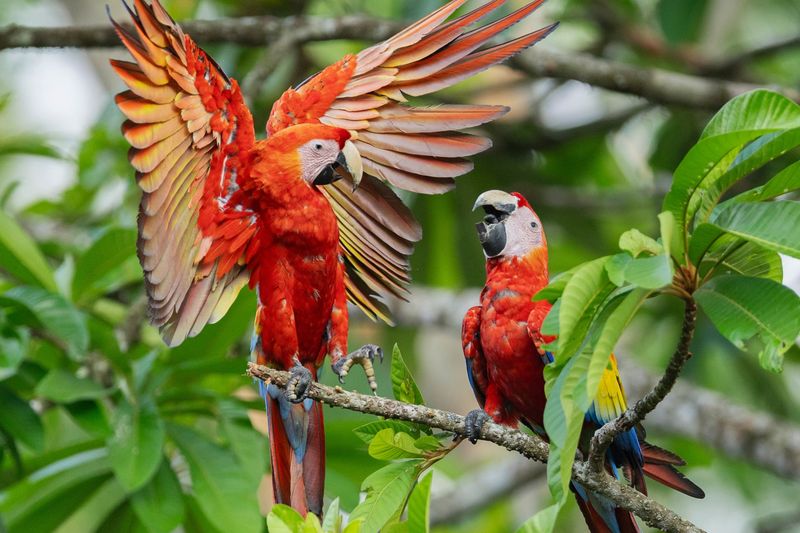
Large parrots shape entire forest ecosystems. As seed dispersers, they spread plant genes across vast distances, helping forests regenerate and maintain genetic diversity.
Many tropical trees evolved specifically to attract parrots with their fruits. After eating, parrots fly miles away before dropping the seeds in their droppings. Some seeds even germinate better after passing through a parrot’s digestive system!
10. They Create And Use Tools
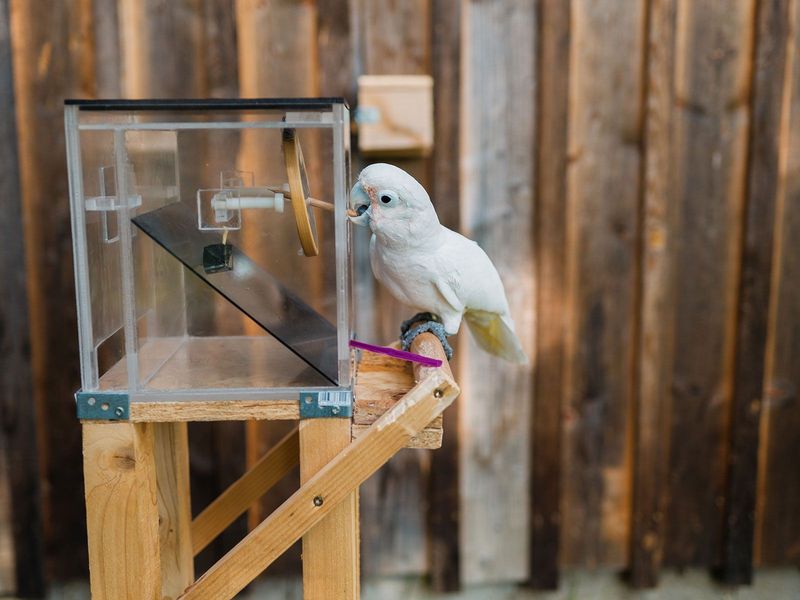
Move over, primates! Large parrots craft and use tools in sophisticated ways. Cockatoos have been observed making specialized tools from different materials to solve complex problems.
Scientists documented wild Goffin’s cockatoos creating multi-part tools by cutting leaf stems to specific lengths, then using them to fish out seeds from tight spaces. In captivity, they’ve been known to combine objects to create longer reaching tools.
11. Endangered Status In The Wild
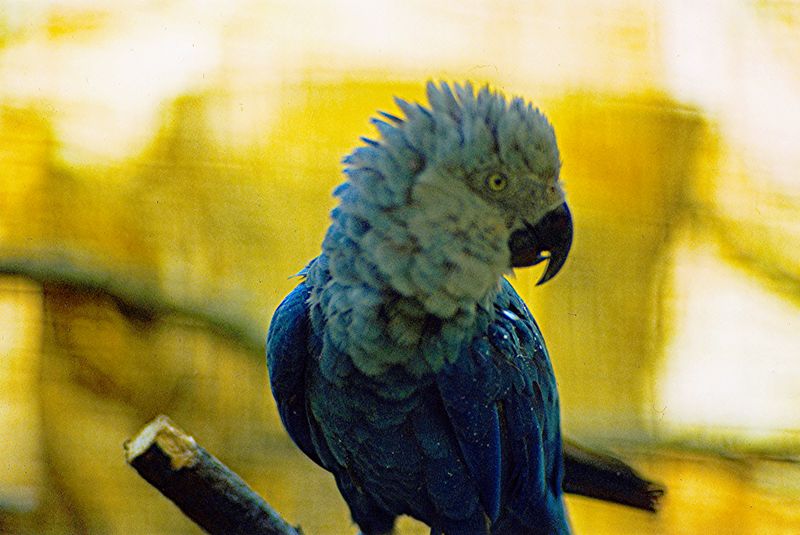
Despite their popularity as pets, many large parrot species face extinction in the wild. Over 30% of all parrot species are threatened, with habitat loss and poaching as primary causes.
The Spix’s Macaw, made famous in the movie Rio, was declared extinct in the wild in 2019. For every parrot legally in the pet trade, countless others die during capture and transport. Conservation efforts now focus on captive breeding programs.
12. Body Temperature Higher Than Humans

Large parrots run hot! Their normal body temperature ranges between 103-104°F, significantly warmer than our 98.6°F. This higher metabolism fuels their incredible energy levels and activity.
Their specialized respiratory system includes air sacs throughout their body that supplement their lungs. This unique system allows for efficient oxygen use during flight and helps regulate their temperature. Overheated parrots will hold their wings away from their bodies to cool down.
13. Cultural Traditions Among Flocks

Researchers have discovered that parrot flocks develop unique “cultures” passed down through generations. Different groups of the same species develop distinct vocalizations, food preferences, and behaviors.
Young parrots learn these traditions through observation during their extended childhood. In Australia, one group of cockatoos learned to open trash bins by watching others, with the technique spreading through neighborhoods like a cultural trend.
14. Zygodactyl Feet For Incredible Dexterity
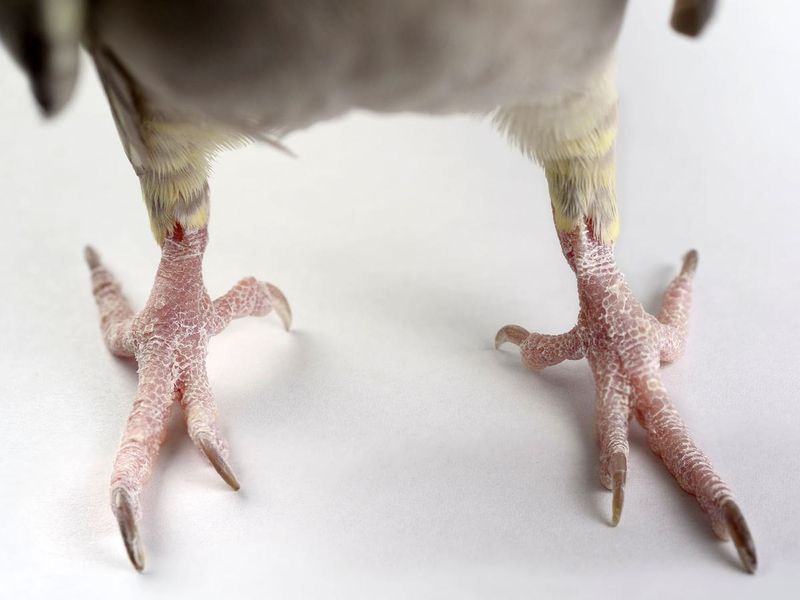
Those powerful parrot feet aren’t just for perching! Their zygodactyl arrangement – two toes forward and two backward – gives them almost hand-like dexterity.
Large parrots use their feet to hold food while eating, climb with incredible precision, and even play with toys. The grip strength of a macaw can exceed 500 pounds per square inch, enough to crack hard nuts or deliver a painful bite when threatened.
15. They Dance To Music With Rhythm
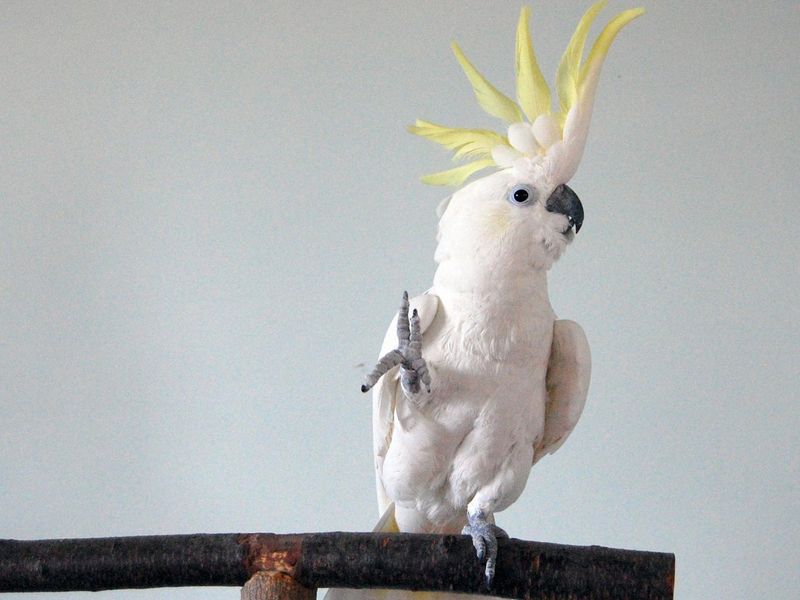
Large parrots don’t just bob randomly to music – they actually perceive and move to the beat! Scientific studies confirm they can identify rhythm and synchronize their movements accordingly.
Snowball, a famous sulphur-crested cockatoo, went viral for dancing to Backstreet Boys songs with impressive timing. Researchers found he could adjust to tempo changes, demonstrating true musical comprehension rather than just mimicry. This ability was previously thought unique to humans.


